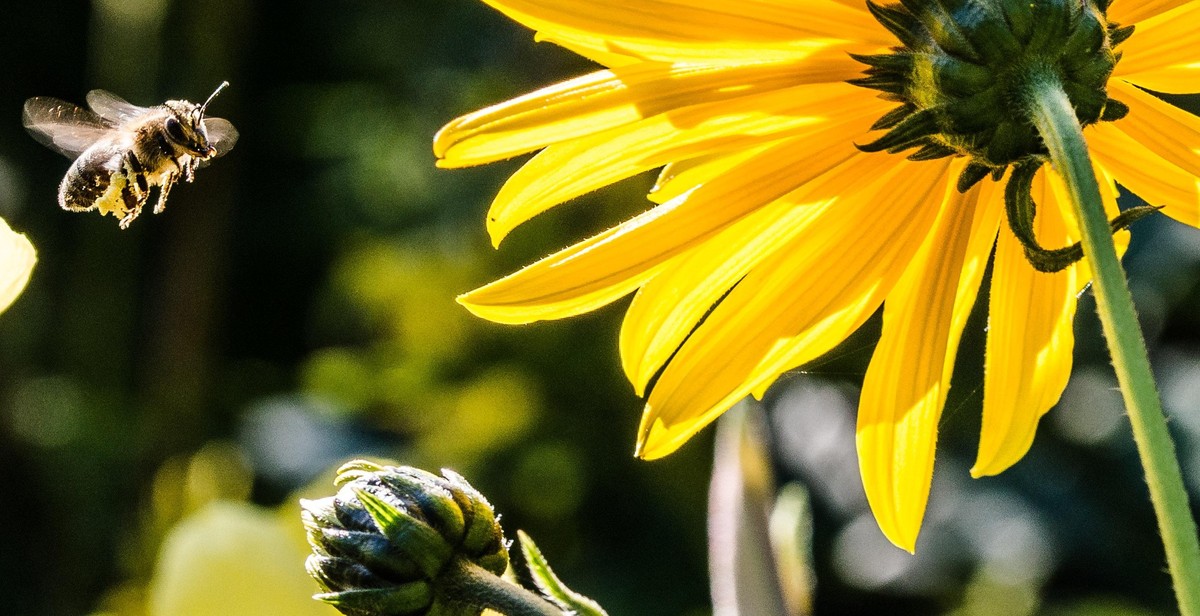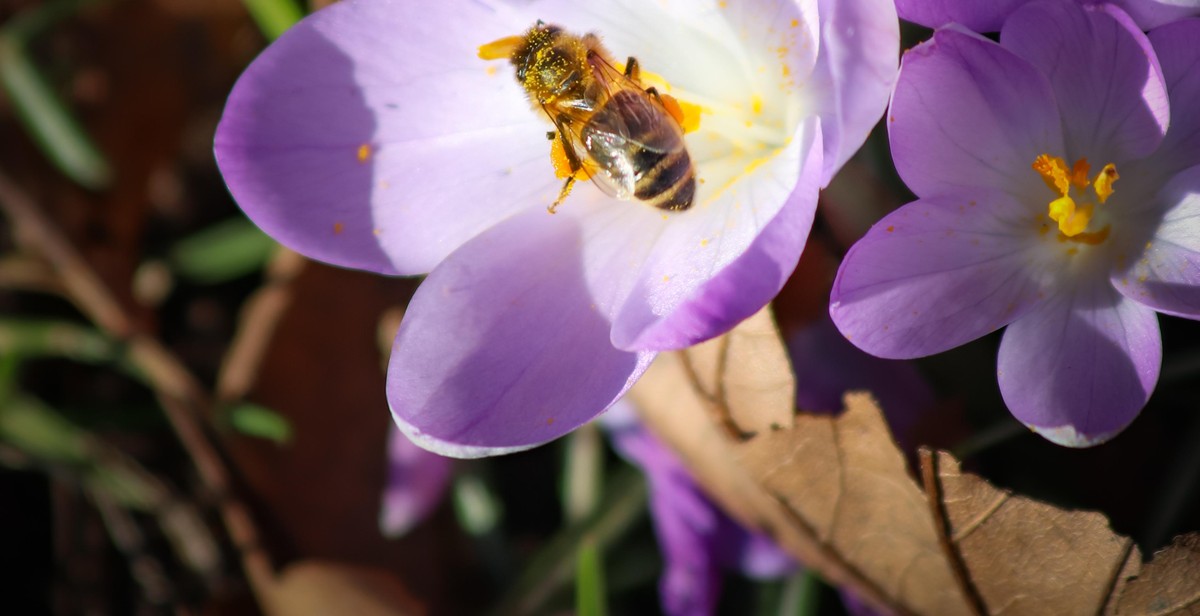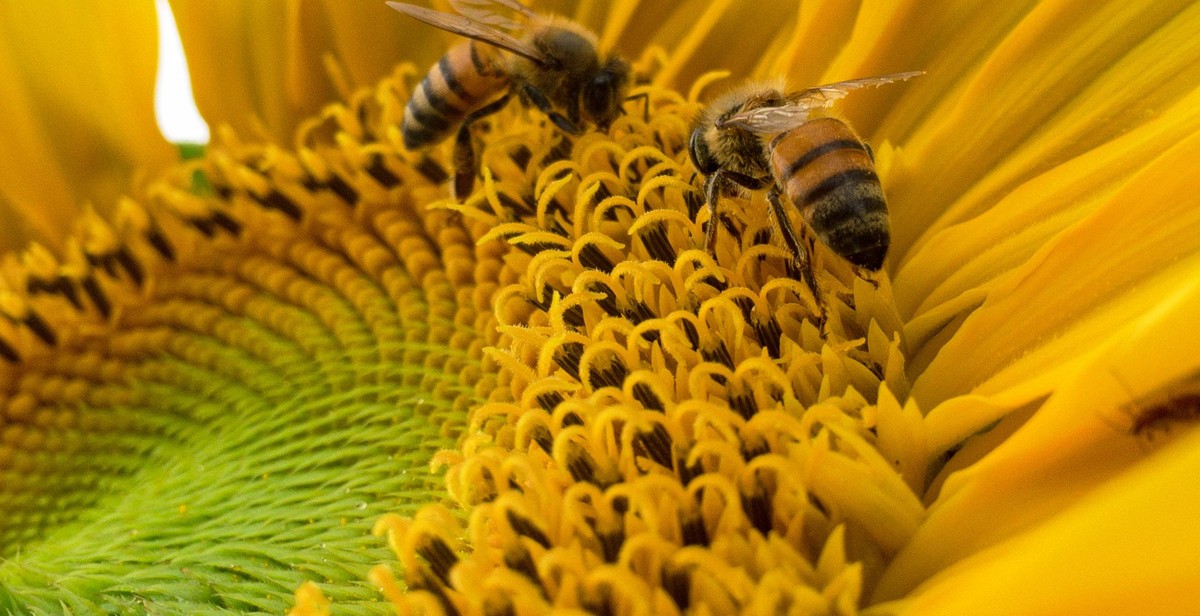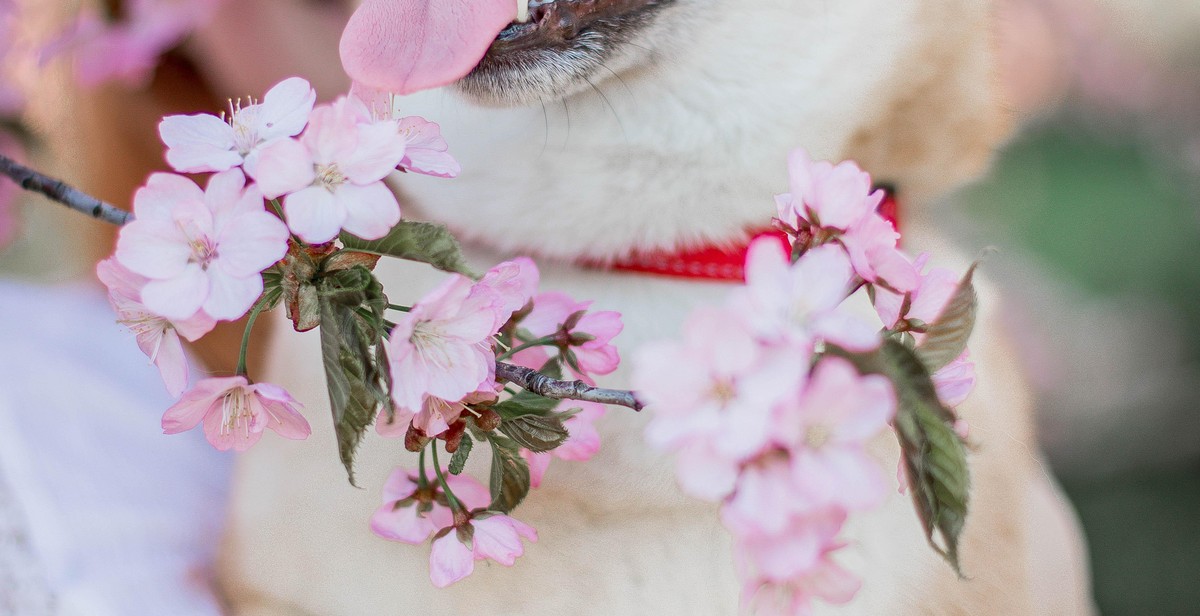How to Create a Bee-Friendly Garden to Support Pollinators
Bees play a crucial role in pollinating plants and ensuring food security for both humans and animals. However, habitat loss, pesticide use, and climate change have contributed to a significant decline in bee populations worldwide. As gardeners, we can do our part to support pollinators by creating bee-friendly gardens.
What is a Bee-Friendly Garden?
A bee-friendly garden is a garden that provides food, water, and shelter for bees and other pollinators. It is a garden that is free of pesticides and chemical fertilizers that can harm bees. A bee-friendly garden can be any size, from a small balcony garden to a large backyard garden.
How to Create a Bee-Friendly Garden
Creating a bee-friendly garden is easy and fun. Here are some steps to follow:
- Choose bee-friendly plants. Bees are attracted to plants with bright colors, such as blue, purple, and yellow. Some examples of bee-friendly plants include lavender, sunflowers, and wildflowers.
- Avoid using pesticides and chemical fertilizers. Instead, use natural methods to control pests and enrich the soil.
- Provide a source of water. Bees need water to drink and to cool their hives. A shallow dish filled with water and stones can provide a source of water for bees.
- Create a habitat for bees. Bees need a place to live and breed. You can create a habitat for bees by providing nesting sites, such as bee hotels or hollow stems.
The Benefits of a Bee-Friendly Garden
A bee-friendly garden not only supports pollinators but also provides a beautiful and healthy environment for us to enjoy. By creating a bee-friendly garden, we can help to reverse the decline of bee populations and ensure a sustainable future for our planet.

Why Create a Bee-Friendly Garden?
Bees are crucial pollinators that are responsible for pollinating approximately one-third of the world’s food crops. Without bees, many fruits, vegetables, and nuts would not exist, and the world’s food supply would be severely impacted.
The Importance of Pollinators
Pollinators, such as bees, butterflies, and birds, play a vital role in maintaining healthy ecosystems and biodiversity. They help plants reproduce by transferring pollen from the male to the female parts of flowers, allowing them to produce seeds and fruit. This process is essential for the survival of many plant species, including those that provide food for humans and wildlife.
Bees are particularly important pollinators because they are responsible for pollinating a wide range of crops, including almonds, apples, blueberries, cherries, cucumbers, melons, and pumpkins. Without bees, many of these crops would be significantly reduced, leading to food shortages and higher prices.
Decline in Bee Populations
Unfortunately, bee populations around the world are in decline due to a range of factors, including habitat loss, pesticide use, and climate change. This decline is a significant concern because it not only affects the availability of food but also has economic impacts on agriculture and the environment as a whole.
Creating a bee-friendly garden is one way that individuals can help support pollinators and contribute to their conservation. By providing a habitat for bees and other pollinators, you can help to ensure that they have access to the food and shelter they need to thrive.
Furthermore, a bee-friendly garden can be a beautiful and rewarding addition to any home. It can provide a source of fresh produce, attract other beneficial insects and wildlife, and contribute to a more sustainable and healthy environment.
In the next section, we will discuss how to create a bee-friendly garden and provide some tips on how to make your garden a welcoming space for bees and other pollinators.

Designing Your Bee-Friendly Garden
Creating a bee-friendly garden is not only beneficial for the environment but also adds beauty to your outdoor space. Here are some tips to help you design a garden that supports pollinators:
Choosing Native Plants
Native plants are the best choice for a bee-friendly garden as they have evolved to thrive in the local climate and soil conditions. This also means they are more likely to attract native bees and other pollinators to your garden. Look for plants that are labeled as native to your area or consult with a local nursery or gardening expert for recommendations.
Creating a Variety of Blooms
Bees are attracted to a variety of flower shapes, sizes, and colors. By planting a diverse selection of flowers that bloom at different times of the year, you can provide a consistent source of food for bees throughout the growing season. Consider planting a mix of annuals, perennials, and flowering shrubs to create a diverse and vibrant garden.
Planting in Clumps
Planting flowers in clumps or groups can be more attractive to bees than single plants scattered throughout the garden. Clumps of flowers provide a concentrated source of food and make it easier for pollinators to find and visit multiple flowers in one location. This can also help conserve energy for bees by reducing the distance they need to fly to find food.
Including Host Plants
Host plants are plants that provide food and habitat for specific types of bees. For example, bumblebees need a place to nest and will use abandoned rodent burrows or other small cavities in the ground. Including plants like clover, vetch, or lupines in your garden can provide cover and nesting sites for bumblebees. Similarly, including milkweed plants in your garden can attract monarch butterflies, which are important pollinators.
Providing Water Sources
Bees need access to clean water for drinking and cooling their hives. Providing a shallow water source, such as a bird bath or shallow dish filled with pebbles and water, can help attract bees to your garden. Make sure to keep the water clean and change it regularly to prevent bacteria growth.
| Tip: | Avoid using pesticides in your garden as they can be harmful to bees and other pollinators. Instead, opt for natural pest control methods like companion planting or handpicking pests. |
|---|

Maintaining Your Bee-Friendly Garden
Creating a bee-friendly garden is not just about planting the right flowers and herbs. To truly support pollinators, it is important to maintain your garden in a sustainable way that avoids harmful pesticides and removes invasive plants.
Avoiding Pesticides
Pesticides can be harmful to bees and other pollinators, and can even threaten their survival. To avoid pesticides in your garden:
- Choose natural pest control options, such as companion planting, handpicking pests, and using insecticidal soap.
- Avoid using chemical pesticides, especially during flowering periods when bees are most active.
- Consider using organic gardening practices, such as composting and crop rotation, to keep your plants healthy and pest-free.
Practicing Sustainable Gardening
Sustainable gardening practices can help create a healthy environment for bees and other pollinators, while also reducing your environmental impact. To practice sustainable gardening:
- Use natural fertilizers, such as compost and manure, instead of synthetic fertilizers that can harm pollinators.
- Conserve water by using rain barrels and drip irrigation systems.
- Choose native plants that are adapted to your climate and require less water and maintenance.
Removing Invasive Plants
Invasive plants can crowd out native plants that are important for pollinators, and can disrupt the balance of your garden ecosystem. To remove invasive plants:
- Identify invasive plants in your garden and remove them as soon as possible.
- Replace invasive plants with native plants that provide food and habitat for pollinators.
- Monitor your garden regularly for new invasive species and take action promptly.
| Avoiding Pesticides | Practicing Sustainable Gardening | Removing Invasive Plants |
|---|---|---|
| Choose natural pest control options | Use natural fertilizers | Identify invasive plants in your garden and remove them |
| Avoid using chemical pesticides | Conserve water | Replace invasive plants with native plants |
| Consider using organic gardening practices | Choose native plants | Monitor your garden regularly |

Attracting Other Pollinators
While bees are the most important pollinators in any garden, there are other pollinators that can help your plants thrive. Here are some tips to attract butterflies and hummingbirds to your garden:
Butterflies
Butterflies are not only beautiful to look at but are also important pollinators. Here are some ways to attract them to your garden:
- Plant nectar-rich flowers in bright colors like red, orange, yellow, and purple. Some good options are butterfly bush, coneflower, milkweed, and zinnias.
- Provide a sunny spot for them to bask in. Butterflies need warmth to fly and will often sunbathe on flat surfaces.
- Provide a water source. Butterflies drink water from shallow puddles, so fill a shallow dish with water and place it in a sunny spot.
- Provide host plants for caterpillars. Different species of butterflies have different host plants where they lay their eggs. For example, monarch butterflies lay their eggs on milkweed plants.
Hummingbirds
Hummingbirds are not only fascinating to watch but are also efficient pollinators. Here are some ways to attract them to your garden:
- Plant nectar-rich flowers in bright colors like red, orange, and pink. Some good options are bee balm, cardinal flower, and fuchsia.
- Provide a hummingbird feeder filled with sugar water. Make sure to clean and change the nectar regularly to prevent mold and bacteria growth.
- Provide perches for them to rest on. Hummingbirds need to rest frequently between feeding and will appreciate a place to perch.
- Provide a water source. Hummingbirds will drink water from a shallow dish or mist from a sprinkler.
| Butterflies | Hummingbirds |
|---|---|
| butterfly bush | bee balm |
| coneflower | cardinal flower |
| milkweed | fuchsia |
| zinnias |

Conclusion
Creating a bee-friendly garden is not only beneficial for the environment but also for your own personal enjoyment. By following the tips and guidelines outlined in this article, you can easily create a space that supports pollinators and adds beauty to your outdoor space.
Remember the Importance of Pollinators
Bees, butterflies, and other pollinators play a critical role in our ecosystem. They help to pollinate the plants that provide us with food, oxygen, and other resources. By creating a bee-friendly garden, you are doing your part to support these important creatures.
Choose the Right Plants
Choosing the right plants is key to creating a successful bee-friendly garden. Look for native plants that are adapted to your region and will provide food and shelter for pollinators throughout the year.
Provide Water and Shelter
Bees and other pollinators need access to water and shelter to thrive. Consider adding a bird bath or small pond to your garden, and plant shrubs and trees to provide shelter from wind and rain.
Avoid Pesticides and Chemicals
Pesticides and chemicals can be harmful to pollinators, so it’s important to avoid using them in your garden. Instead, use natural methods like companion planting and crop rotation to control pests and diseases.
Get Involved
Finally, consider getting involved in local efforts to support pollinators. Join a local beekeeping club, participate in citizen science projects, or simply spread the word about the importance of these important creatures.
By following these tips, you can create a beautiful, bee-friendly garden that supports pollinators and helps to protect our environment for generations to come.
